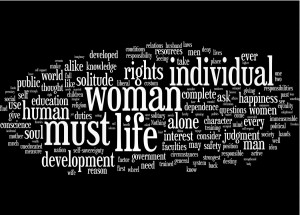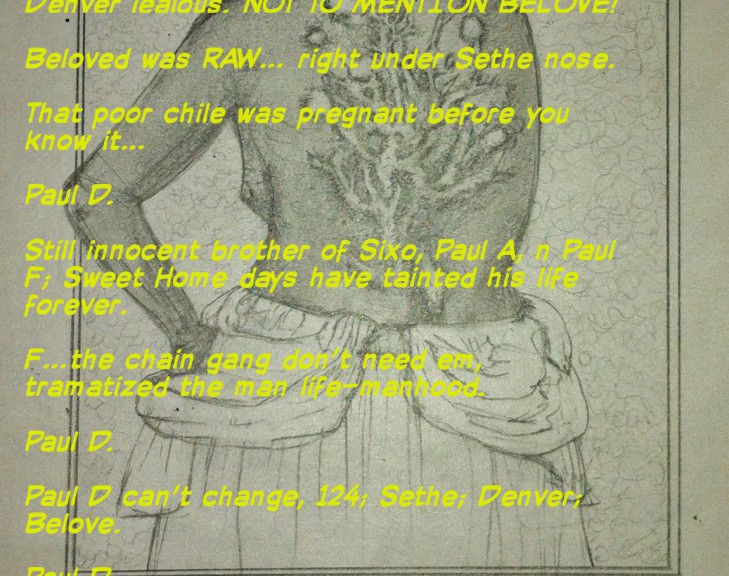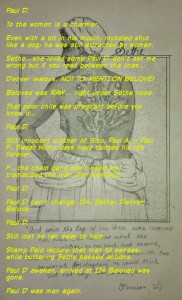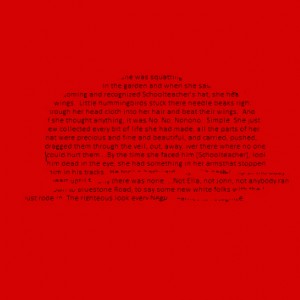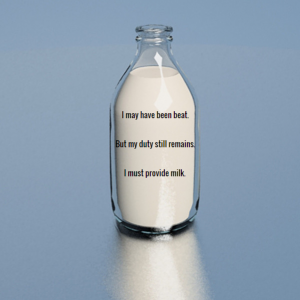Beloved’s Most Pivotal Scene
Toni Morrison’s “Beloved” is about an ex-slave, Sethe, who killed her daughter to save her child from a life of slavery. What she experienced was so dehumanizing that she felt dying would be better than going back. She makes the decision to take her children’s lives mercifully, rather than leave them in the hands of the Schoolteacher. Although life in Sweet Home became very hard after Mr. Garner died, I feel that without the nephews taking her milk, she wouldn’t have tried “saving” her children the way she did.
When the Schoolteacher sees what she has done he thinks “…Now she’d gone wild due to the mishandling of the nephews..,” and I feel that he is right. I think that the nephews holding her down and taking her milk had a direct relation to the killing of her older daughter, which was done to save her from a fate worse than death.
Years later when she is telling Paul D about this incident, we get a little glimpse of how much this event hurt her.
“After I left you, those boys came in there and took my milk. That’s what they came in there for. Held me down and took it. I told Mrs. Garner on em. She had that lump and couldn’t speak but her eyes rolled out tears. Them boys found out I told on em. Schoolteacher made one open up my back, and when it closed it made a tree. It grows there still” (Morrison 19).
Sethe tells Mrs. Garner what the nephews had done, and in return gets beaten under Schoolteacher’s instruction. Her back was torn open, and would heal to become a tree of scars covering her back. In addition to the physical scars, this event left her with psychological scars as well. In fact, her wounds were probably not even done healing when Schoolteacher showed up in Baby Suggs yard.
The quoted passage continues:
“They used cowhide on you?”
“And they took my milk.”
“They beat you and you was pregnant?”
“And they took my milk!” (20)
Paul D. sees the tree and that is all he is could think about. Sethe including “And they took my milk!” shows us how strongly this hurt and dehumanized her.
Running away from Sweet Home, Sethe was all alone. Halle was supposed to accompany her but he never showed up. At this point she was very pregnant, and her back was a mess. She later finds out from Paul D the reason Halle never showed up. Halle had seen what happened to her and had a mental breakdown.
“The day I came in here. You said they stole your milk. I never knew what it was that messed him up. That was it, I guess. All I knew was that something broke him… But whatever he saw go on in that barn that day broke him like a twig.”
…”It broke him, Sethe.” Paul D looked up at her and sighed. “You may as well know it all. Last time I saw him he was sitting by the chum. He had butter all over his face” (81)
Halle had seen what the nephews did to her, and was powerless to stop them. This drove him insane. Because of what the nephews did, Sethe lost her husband. He was not there to help his pregnant, barefoot wife to safety. Sethe and the baby still made it to Baby Suggs alive (thanks to Amy Denver), but with a husband and without a tree, the trip would not have taken such a devastating physical and psychological toll on her.
When Beloved comes back, Sethe is sure she would understand why she had to do what she did. Here we see Sethe thinking about what she would say to Beloved:
“…I didn’t have time to explain before because it had to be done quick. Quick. She had to be safe and I put her where she would be. … I’ll explain to her, even though I don’t have to. Why I did it. How if I hadn’t killed her she would have died and that is something I could not bear to happen to her. When I explain it she’ll understand, because she understands everything already. I’ll tend her as no mother ever tended a child, a daughter. Nobody will ever get my milk no more except my own children. I never had to give it to nobody else– and the one time I did it was took from me–they held me down and took it. Milk that belonged to my baby…. The one I managed to have milk for and to get it to her even after they stole it; after they handled me like I was the cow, no, the goat, back behind the stable because it was too nasty to stay in with the horses” (236).
Shethe was trying to keep her children safe. Going back to Sweet Home would have been a death sentence, and Sethe could not let that happen to her beloved. We see here, when she equates going back to a death sentence, that she brings up the taking of the milk. It wasn’t simply that they took it, but that it was for her baby and they took it regardless. The way they dehumanized her is on her mind when she’s explaining her actions.
She finally makes it to Baby Suggs, and starts getting better. She spends twenty-eight days with her family, new friends, and freedom. The rape of her milk, the beating, delivering in the forest, Halle still gone, these things don’t leave her mind. When the Schoolteacher shows up at 124, she loses it. She knows what he is capable of, and she goes ahead and tries to “save” her children from what she clearly believes is a fate worse than death.
If her milk hadn’t been taken, Halle would have been fine, and escaped with her. Delivering in the woods would still have been an ordeal, but with Halle there and no tree on her back, it wouldn’t have taken such a toll on her. Without that transformational event ,she would never have been able to kill her child.
Morrison, Toni. Beloved: A Novel. New York: Vintage, 2004. Print. Pgs 19, 20, 81, 236

